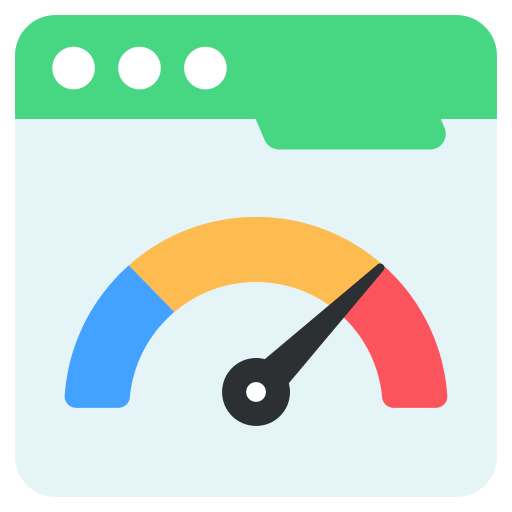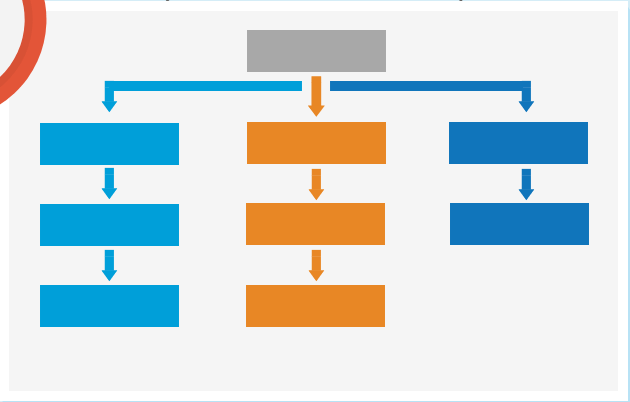
Introduction:
In today’s digital age, the speed of a website plays a pivotal role in its success. Users expect instant access to information, and search engines prioritize faster-loading sites in their rankings. Consequently, optimizing website speed has become imperative for
Table of Contents
businesses and individuals alike. This comprehensive guide delves into the intricacies of website speed testing, offering insights into the importance of speed optimization, tools for analysis, common performance bottlenecks, strategies for enhancing website speed, and the broader impact of speed on user experience and business outcomes.
Importance of Website Speed
The speed at which a website loads significantly impacts user experience, conversion rates, and search engine visibility. Studies have shown that even minor delays in page loading can lead to higher bounce rates and decreased user engagement. Moreover, search engines like Google consider page speed as a crucial factor in determining search rankings, emphasizing the importance of speed
optimization for SEO purposes. Additionally, in an era where mobile browsing is prevalent, website speed becomes even more critical, as slower load times can lead to frustration and abandonment among mobile users.
Tools for Website Speed Testing:
Numerous tools are available to measure and analyze website speed comprehensively. Prominent among these are Google PageSpeed Insights, GTmetrix, Pingdom, WebPageTest, and Lighthouse. These tools offer detailed insights into various performance metrics such as page load time, time to first byte (TTFB), render-blocking resources, and overall page size. Leveraging these tools
enables website owners to identify areas for improvement and track performance over time. Furthermore, some tools provide actionable recommendations for optimization, helping users address specific issues that may be hindering their website’s speed.
Common Performance Bottlenecks:
Several factors contribute to slow website performance, including bulky images, excessive HTTP requests, render-blocking scripts, and inadequate server resources. Optimizing these elements is essential for enhancing website speed. Image compression,
minification of CSS and JavaScript files, implementing browser caching, and utilizing content delivery networks (CDNs) are among the effective strategies for addressing performance bottlenecks. Additionally, reducing server response times through server optimization and choosing reliable hosting providers can significantly improve overall website performance.
Strategies for Speed Optimization:
To maximize website speed, it is essential to adopt a holistic approach encompassing various optimization techniques. Employing responsive web design to ensure compatibility across devices, prioritizing above-the-fold content loading, optimizing server response times, and employing lazy loading for images and videos are some effective strategies for improving website speed.
Additionally, implementing HTTP/2 protocol and utilizing progressive web app (PWA) technologies can further enhance performance and user experience. Moreover, optimizing third-party scripts and integrations, such as analytics and social media plugins, can prevent them from slowing down the website.
Continuous Monitoring and Iterative Improvement:
Website speed optimization is an ongoing process that requires continuous monitoring and iterative improvement. Regular performance audits, A/B testing of optimization strategies, and staying updated with the latest web technologies are essential for maintaining optimal website speed. By monitoring key performance indicators (KPIs) such as page load time, time to interactive
(TTI), and first input delay (FID), website owners can identify areas for improvement and prioritize optimization efforts accordingly. Additionally, monitoring user feedback and behavior can provide valuable insights into areas where speed optimization can have the most significant impact on user satisfaction and conversion rates.
In conclusion, website speed plays a pivotal role in determining the success of a website in today’s digital landscape. By understanding the importance of speed optimization, leveraging tools for analysis, addressing common performance bottlenecks, and implementing effective optimization strategies, website owners can enhance user experience, improve search engine visibility,
and achieve their business goals. Embracing a mindset of continuous improvement and staying abreast of evolving technologies are key to maintaining optimal website speed in the long term. Ultimately, prioritizing website speed not only enhances user satisfaction but also contributes to improved conversion rates, higher search engine rankings, and overall business success.
Understanding Website Speed Test A Comprehensive Explanation
In the digital realm, where attention spans are fleeting and competition is fierce, the speed at which a website loads can make or break its success. Website speed test, also known as website performance testing, is the process of evaluating how quickly a website
loads and identifying areas for improvement to enhance its speed and performance. In this comprehensive guide, we will delve into the intricacies of website speed testing, exploring its significance, methodologies, tools, metrics, and actionable insights for optimization.
Significance of Website Speed Test:
Website speed is not merely a matter of convenience; it is a critical determinant of user experience, engagement, and business outcomes. Research indicates that users expect websites to load within a matter of seconds, and any delay can lead to frustration
, increased bounce rates, and diminished conversions. Moreover, search engines like Google consider page speed as a ranking factor, prioritizing faster-loading websites in search results. Therefore, conducting regular website speed tests is essential for ensuring optimal performance, retaining users, and maximizing online visibility and revenue.
Methodologies of Website Speed Test:
Website speed tests employ various methodologies to measure and analyze the performance of a website. One common approach is synthetic monitoring, where predefined test scenarios are executed using automated tools to simulate user interactions and
assess performance metrics such as page load time, time to first byte (TTFB), and rendering speed across different devices and network conditions. Another approach is Real User Monitoring (RUM), which captures performance data from actual user interactions, providing insights into real-world user experience and behavior.
Tools for Website Speed Test:
A plethora of tools are available for conducting website speed tests, each offering unique features and capabilities. Prominent among these are Google PageSpeed Insights, GTmetrix, Pingdom, WebPageTest, and Lighthouse. These tools analyze various
performance metrics, generate performance reports, and offer actionable recommendations for optimization. Additionally, web browsers like Google Chrome and Mozilla Firefox provide built-in developer tools that enable users to analyze network activity, diagnose performance issues, and measure website speed directly from the browser.
Metrics for Website Speed Test:

Website speed tests measure performance using a range of metrics that provide insights into different aspects of website performance. Key metrics include:
Page Load Time: The time taken for a webpage to fully load in the browser.
Time to First Byte (TTFB): The time taken for the browser to receive the first byte of data from the server.
First Contentful Paint (FCP): The time taken for the browser to render the first piece of content on the webpage.
Time to Interactive (TTI): The time taken for the webpage to become fully interactive and responsive to user input.
Total Page Size: The combined size of all resources (HTML, CSS, JavaScript, images, etc.) required to load the webpage.
Number of Requests: The total number of HTTP requests made by the browser to fetch all resources required to load the webpage.
Actionable Insights for Optimization:
Website speed tests not only identify performance bottlenecks but also provide actionable insights and recommendations for optimization. These recommendations may include:
Optimizing Images: Compressing images, using appropriate image formats, and lazy loading images to reduce page size and improve load times.
Minifying Resources: Minifying CSS, JavaScript, and HTML files to reduce file size and minimize network latency.
Caching: Implementing browser caching and server-side caching to store static resources locally and reduce server load and response times.
Content Delivery Networks (CDNs): Leveraging CDNs to distribute content across multiple servers worldwide and deliver it to users from the nearest edge server, reducing latency and improving load times.
Server Optimization: Optimizing server configurations, upgrading hardware, and using efficient server-side technologies to improve TTFB and overall server response times.
In conclusion, website speed testing is a crucial process for evaluating and optimizing the performance of a website. By understanding the significance of website speed, employing appropriate testing methodologies, leveraging tools for analysis, measuring key performance metrics, and implementing actionable insights for optimization, website owners can enhance user experience, improve search engine rankings, and achieve their business objectives. Continuous monitoring and optimization are essential to ensure that a website maintains optimal performance in the dynamic digital landscape, driving engagement, conversions, and long-term success.
Unveiling the Benefits of Website Speed Testing A Comprehensive Exploration

Title: Unveiling the Benefits of Website Speed Testing: A Comprehensive Exploration
In the digital realm, where instant gratification is the norm, the speed at which a website loads can make or break its success. Website speed testing emerges as a crucial practice in ensuring optimal performance and user satisfaction. This comprehensive exploration delves into the intricacies of website speed testing, unveiling its myriad benefits for businesses and individuals alike.
Understanding Website Speed Testing:
Website speed testing refers to the process of evaluating and analyzing the performance of a website in terms of its loading speed and overall responsiveness. This assessment encompasses various metrics such as page load time, time to first byte (TTFB), render-blocking resources, and server response times. By conducting thorough speed tests, website owners gain valuable insights into the factors influencing their site’s performance and identify areas for improvement.
Enhanced User Experience:
One of the primary benefits of website speed testing is the enhancement of user experience. Research indicates that users are increasingly intolerant of slow-loading websites, often abandoning them in favor of faster alternatives. By optimizing website speed based on test results, businesses can provide users with a seamless and enjoyable browsing experience. Improved load times lead to reduced bounce rates, increased page views, and higher levels of engagement, ultimately fostering positive user perceptions and driving customer satisfaction.
Boosted Search Engine Rankings:
Website speed is a critical factor considered by search engines when determining search rankings. Google, in particular, has explicitly stated that page speed influences its algorithm, with faster-loading sites often ranking higher in search results. Therefore, conducting regular speed tests and optimizing website performance can contribute to improved search engine visibility and organic traffic. By aligning with search engine preferences, businesses can enhance their online visibility and attract a larger audience, thereby increasing opportunities for conversion and revenue generation.
Higher Conversion Rates:
The correlation between website speed and conversion rates is well-established. Studies have consistently shown that faster-loading websites tend to have higher conversion rates compared to slower counterparts. Speed tests enable businesses to identify performance bottlenecks that may hinder the user journey, such as lengthy load times or unresponsive elements. By addressing these issues through optimization efforts, businesses can streamline the conversion process, reduce friction, and encourage users to take desired actions, whether it be making a purchase, signing up for a newsletter, or completing a form.
Improved Mobile Performance:
With the proliferation of mobile devices, optimizing website speed for mobile users has become increasingly important. Mobile users often encounter slower load times due to factors such as network limitations and device capabilities. Website speed testing allows businesses to assess their site’s performance on mobile devices accurately. By optimizing for mobile speed based on test results, businesses can cater to the growing segment of mobile users effectively, providing them with a fast and seamless browsing experience. This, in turn, leads to higher mobile engagement, increased conversions, and enhanced brand loyalty among mobile users.

Optimized Advertising Campaigns:
For businesses running digital advertising campaigns, website speed testing can have a significant impact on campaign performance and ROI. Slow-loading landing pages can adversely affect ad quality scores, leading to higher advertising costs and lower ad placements. By ensuring that landing pages load quickly and efficiently through speed testing and optimization, businesses can improve the effectiveness of their advertising campaigns. Faster-loading landing pages result in better ad performance, higher click-through rates (CTR), and ultimately, improved return on investment (ROI) for advertising spend.
Competitive Advantage:
In today’s competitive digital landscape, where consumers have countless options at their fingertips, website speed can serve as a distinguishing factor for businesses. By consistently monitoring and optimizing website speed through regular speed testing, businesses can stay ahead of competitors and differentiate themselves in the market. A fast-loading website not only attracts and retains users but also enhances brand credibility and trust. Moreover, businesses that prioritize website speed demonstrate a commitment to providing superior user experiences, which can set them apart from competitors and foster long-term customer loyalty.
Conclusion:
In conclusion, website speed testing offers a multitude of benefits for businesses seeking to thrive in the digital landscape. From enhancing user exper
Sitemap Generator Tool ( Free Tool )



